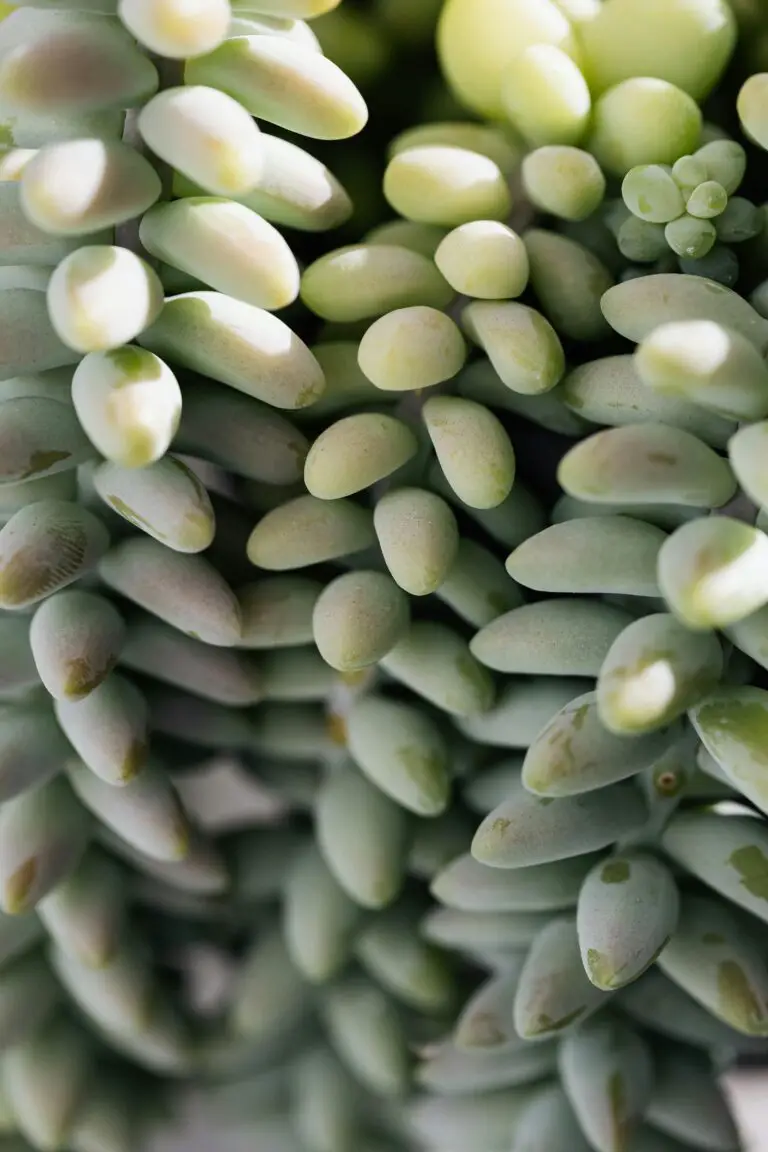Introduction to Sedum Pruning
Gardening enthusiasts often marvel at the resiliency of succulents, with sedum being a prime example. These robust plants grace many gardens with their charming foliage and vibrant blooms. However, even the sturdiest of plants can benefit from a thoughtful trim. Today, we’re delving into the realm of sedum care, specifically the perks of cutting back these drought-resistant beauties, which can have an astounding impact on their year-round performance.

Picture this: the robust sedum plant in your garden is starting to overreach its space, casting a sprawling web of green throughout your meticulously designed floral array. It’s here, in this real-life scenario, where the clipping shears come into play. By cutting back your sedum, you’re not only maintaining its shape, thus keeping your garden aesthetics on point, you’re also encouraging the plant to focus its energy on fortifying its core structure and producing environmentally sound root systems, resulting in a more robust plant come springtime.
The benefits extend beyond mere appearances; a well-pruned sedum is a haven for enhanced blooming. When we trim back these hardy species, we’re essentially guiding their energy into producing floriferous displays that transform your garden into a kaleidoscope of colors when the flowering season arrives. Moreover, cutting back sedum can help prevent the common ailment of ‘floppiness’ where stems grow too long and can’t support the weight of their blooms. Prudent pruning creates sturdy stems that stand tall, bearing their floral crowns with pride.
But it’s not just about what we can see above ground. The action of cutting back sedum stimulates the plant’s subterranean life. Much like a phoenix rising from the ashes, freshly pruned sedum will direct its vigor towards root growth, establishing a solid foundation that beckons bountiful blooms and a resilience to match. In turn, this subterranean strength lends itself to the sedum’s well-being throughout the oscillating seasons, securing its splendor for years to come.
Understanding Sedum’s Growth Habits
Picture the sedum, a hardy perennial that’s as resilient as it is graceful. It sprawls across rockeries and basks in the glow of the summer sun, sporting a tapestry of vivid blooms and plump, evergreen leaves. Sedum, also known as stonecrop, is not just a garden ornament; it’s a marvel of adaptation and growth. These succulent stars excel in storing water within their leaves and stems, granting them the superpower to withstand drought and heat with ease.
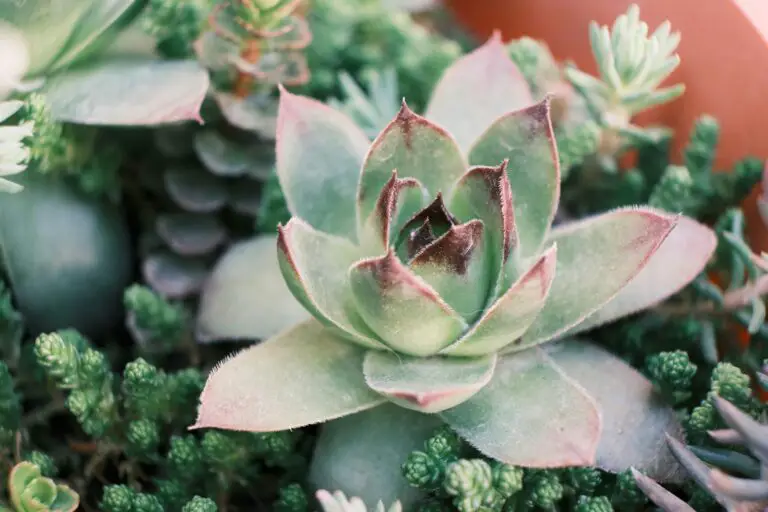
The art of sedum care is a dance with nature; knowing when to intervene and when to stand back is key. As gardeners, we must understand that sedum, much like a symphony, has rhythms and phases. While some varietals spread their foliage like groundcover, others stand tall, with thick, fleshy leaves reaching for the sky. Consider the sedum’s diverse forms and growth patterns, which naturally dictate when our secateurs should come into play.
Pruning, though not always necessary, can enhance sedum’s vitality. Imagine walking through your garden and observing your sedum—perhaps it’s become a tad too enthusiastic, spilling onto paths, or maybe it’s gone leggy, with more stem than leaf. This is when a gentle trim can encourage a fuller, healthier plant. If left unchecked, some sedum might lose that mounded elegance, revealing bare stems beneath a canopy of green.
By tuning into the lifecycle of these robust beauties, we learn that there is a time to admire their wildness and a time to shape their growth. Whether to enhance flowering, manage size, or rejuvenate an aging plant, understanding sedum’s growth habits is a delightful journey, one that rewards the attentive gardener with a serenade of blooms and architectural foliage year after year.
The Best Time for Cutting Back Sedum
If you’re scratching your head about when to trim those plump leaves and robust stems of your beloved sedum, rest easy! The secret to ensuring your succulent buddy stays as photogenic and healthy as possible is all about timing. Spring or right after the last frost is usually your best bet for giving your sedum a little haircut.
Picture this: It’s a mild spring day, and your garden is just waking up from its winter slumber. This is the time when your sedum will appreciate a tidy up before it kicks into high gear for the growing season. Remove any dead or damaged material from the previous year to make way for fresh, vibrant growth. As the seasons turn, the benefits of this spring sprucing will become as clear as the fact that Sedum Sarmentosum is not just another pretty face in the garden but a true landscape gem!
Now, if you missed the spring window, don’t panic. There’s a glorious second chance in late summer or early fall when the sedum shows off its delightful blooms. Snip away then to shape your plant and encourage a burst of flowers that will make your heart sing. Just remember, timing is everything—prune too late in the fall, and you may just be saying goodbye to next year’s performance.

Think of pruning like a spa day for your sedum. It’s not about taking away; it’s about setting the stage for unrestrained beauty and growth. The results could be monumental—it’s the difference between a garden that’s simply surviving and one that’s unabashedly thriving.
Step-by-Step Guide to Pruning Sedum
Wondering if you should cut back your sedum? The short answer is yes, but let’s dive into the “how” to make sure you’re doing it right. Successful sedum care adds that extra pizzazz to your garden, and pruning plays a pivotal role. It’s not just about maintaining a polished look – it keeps your sedums healthy and thick. So, grab your gardening gloves and let’s prune our way to a luscious, envy-worthy sedum display.
Before we unleash the pruners, it’s crucial to don the right tools for the job. We’re in the big leagues of gardening here, where sharp, sterilized pruners or garden shears make all the difference. This is a battle against the ragged edges and the looming threat of pests and diseases – not for the faint-hearted.
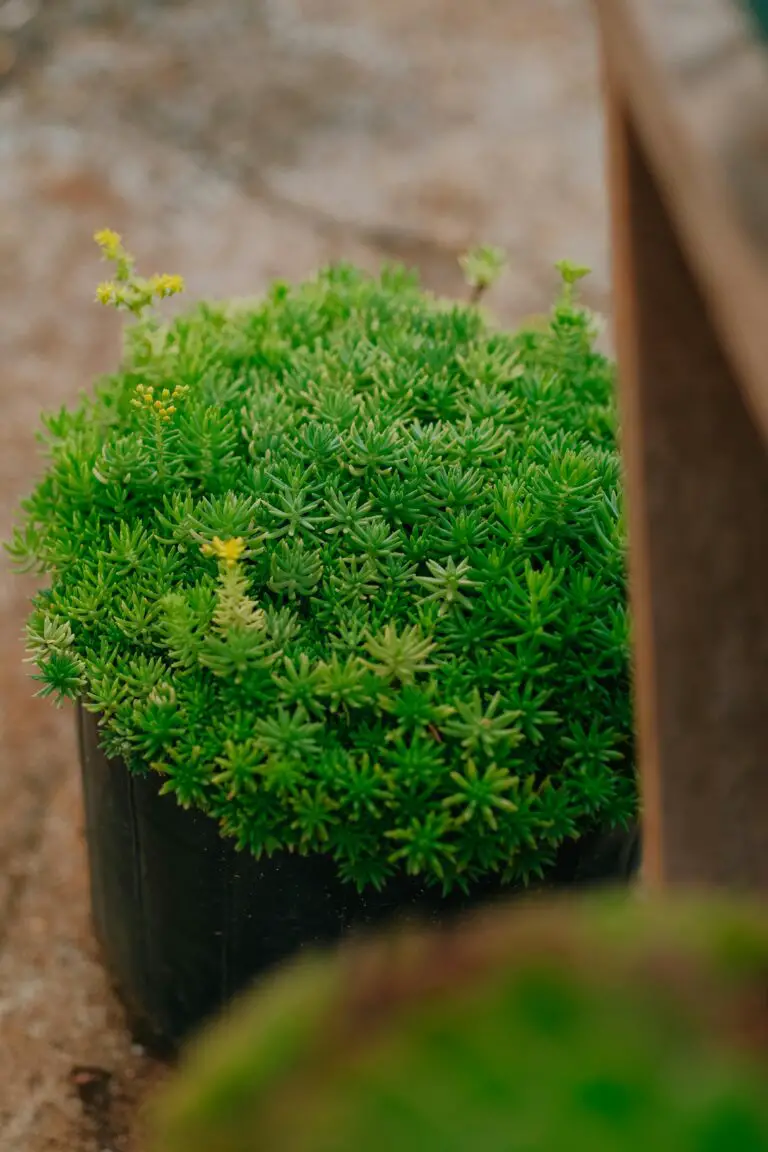
Imagine a sedum, lush and sprawling, but come winter, it’s flopped over like it’s had one too many drinks at the garden party. It’s spring again, time for tough love. Cut back the stems to within an inch of the soil, careful, like disarming a floral bomb, avoiding the new growth. You’re not just pruning; you’re orchestrating a comeback.
Picture this: your stonecrop standing tall, the jelly bean plant plumping up. Each cut invigorates the sedum, channels energy to where it matters. Different species, different cuts, but it’s all jazz to the rhythm of nature. Trust in these verdant sessions to channel vigorous, bushy, photo-ready sedums.
Whether it’s the plump Autumn Joy or the carpeting Gold Moss, each trim adapts to the tune. Look at them in spring – reach for the sky once snipped back. Summer comes along, and a watchful eye and light pinch keep them in check, redirecting their ballet of growth.
You wouldn’t let an artist go wild without a vision, so apply the same principle here. Prune with intent, direct growth, manage flowering, and witness the artistry that unfolds. It’s sedum – robust, forgiving, a flex of green in your gardener’s muscle. And there it is, a succulent not just surviving but thriving, all thanks to a simple cutback.
Common Mistakes to Avoid When Pruning Sedum
If you’re as excited about sedum as we are, you know that these robust, drought-resistant beauties can thrive with minimal fuss. However, even the hardiest plants can fall victim to well-intentioned but misguided pruning techniques. To keep your sedum looking sharp without the pitfalls, let’s explore a few common missteps to avoid – trust me, it’s easier than you think to turn a snip into a snap!
Overzealous Trimming: A Tad Too Much?
Imagine this: The sun is shining, you’re out in the garden, pruners in hand, and before you know it, what was supposed to be a subtle trim has turned into an impromptu topiary session. Sedums, particularly forgiving as they are, can take a hit if over-pruned. Remember, they’re succulents, not hedges! A light touch is all you need to encourage fullness and prevent any inadvertent over-sculpting of these succulent stunners.
Wrong Timing: When To Wield the Shears?
Let me tell you about a friend who decided to give her sedum a fresh cut… in the dead of winter! Sedums are hardy, but they’re not invincible. They store energy in their leaves for survival during the colder months. Pruning at the wrong time can leave your sedums struggling to bounce back. To avoid this, aim for a trim just as the plants enter their active growing phase. For more insights on the opportune pruning period, check out our detailed guide.
Ignoring the Plant’s Natural Shape: Harmony or Havoc?
Ever seen a sedum that looked like it was having a bit of an identity crisis? It’s likely because someone tried to force it into an unnatural shape. Sedums have their own unique, mounded forms that lend a sense of tranquility and flow to your garden. When pruning, work with the plant’s intrinsic contours rather than against them. This will maintain its organic aesthetics while ensuring it stays healthy and true to its nature.
In short, when tackling sedum pruning, think of yourself less as a sculptor and more as a guide, gently directing its growth to display its inherent beauty. Avoiding these common blunders will not just keep your plants thriving but will also solidify your status as a plant whisperer among the foliage of your garden sanctuary. Happy pruning!
Aftercare: Post-Pruning Sedum Care Tips
Pruning your sedum isn’t the end of the journey; it’s a fresh start for your plucky succulent to thrive with renewed vigor! Imagine snipping away the overgrowth just like a chef finely chopping herbs, revealing the potent flavors beneath. That’s exactly what you’re doing for your sedum—setting the stage for a spectacular comeback. Now, let’s walk through the steps you’ll take to ensure your sedum not only recovers from its trim but comes back stronger and more splendid than ever.
First, let’s talk water. Right after cutting back, your sedum is more vulnerable and its watering needs may shift. Give it a light drink to soothe those freshly cut ends, like a comforting cup of tea. Then, take it easy, backing off the watering can because too much moisture can spell trouble for the healing succulent.
Next up, the spotlight’s on lighting. Your sedum’s a sun seeker, but right after pruning, it’s like someone recovering from a spa day—too much sun too soon can be overwhelming. Provide a shaded retreat for a couple of days to let it come to terms with its new size, much like someone adjusting to a bold new haircut.
Nutrition is another key factor for a post-prune sedum. Fertilizing is like the vitamins for your plant—it boosts their energy and helps with the regrowth. Think of it as a post-workout smoothie for your succulent. A balanced succulent fertilizer applied sparingly can work wonders for encouraging robust regrowth.
But what about those cuttings, you may wonder? Waste not, want not! Sedum is a champ at regenerating. Those cuttings can find new life; just let the ends callous over, and then pop them into some soil. Before you know it, you might have a whole new plant to brag about.
In the real world, did you know that gardeners often share cuttings from prized plants, much like family recipes passed down through generations? It’s a way to spread the joy (and your successful sedum pruning endeavors) with friends and fellow green thumbs.
Last but not least, let’s discuss timing. Recovery periods for sedum can vary, like athletes after a big race. Some bounce back swiftly, ready for action, while others take a leisurely pace. Observe your sedum’s progress, be patient, and you’ll soon see signs of new growth that signal a successful pruning session.
For a visual guide to caring for your sedum after a trim, let’s dive into this helpful video:
Moving forward, keep an eye on your pruned sedum. Each day is an opportunity for growth and beauty. Monitor its needs, celebrate each new sprout, and remember that with the right aftercare, your sedum will be the star of the succulent world!
The Role of Pruning in Sedum Pests and Disease Management
Visualize this: a vibrant patch of sedum, also known as stonecrop, that’s been thriving in your rock garden. It’s late in the season and the sedum’s once-lush foliage is beginning to show signs of wilting and browning. It’s not just an eyesore; it’s a siren call for pests and potential plant diseases. But before you fret, let’s delve into the life-saving practice that is pruning your sedum.
Firstly, let’s clear the air on something – pruning sedum isn’t just about keeping things tidy. It’s a strategic move in the game of gardening. When you clip back those spent stems and yellowing leaves, you’re effectively removing an all-you-can-eat buffet for pests. Aphids, snails, and a variety of other plant-munching critters find refuge in dying plant material. And where there are pests, there are diseases they carry, waiting to pounce on weakened plants.
Take a real-life example: Jack from Oregon noticed his sedum was becoming a late-season haven for aphids. By regularly trimming it back, he disrupted the life cycle of these pests, therefore warding off potential outbreaks of plant diseases these tiny troublemakers often harbor. That’s the kind of garden drama nobody needs!
Now, bring in the concept of air circulation – the unsung hero in disease prevention. Overgrown and matted sedum can trap moisture, creating the perfect petri dish for fungal infections. Pruning opens up the plant, allowing air to dance between the branches, whisking away moisture and reducing the risk of diseases like powdery mildew or rust.
Imagine your hand as the benevolent guardian of your garden’s health, gently snipping away the precarious parts to reveal a strong, disease-resistant sedum. But just as every hero needs a trusty sidekick, every gardener needs the right visual. Behold, a perfect example of a healthy sedum plant – a testament to the wonders of proper pruning.
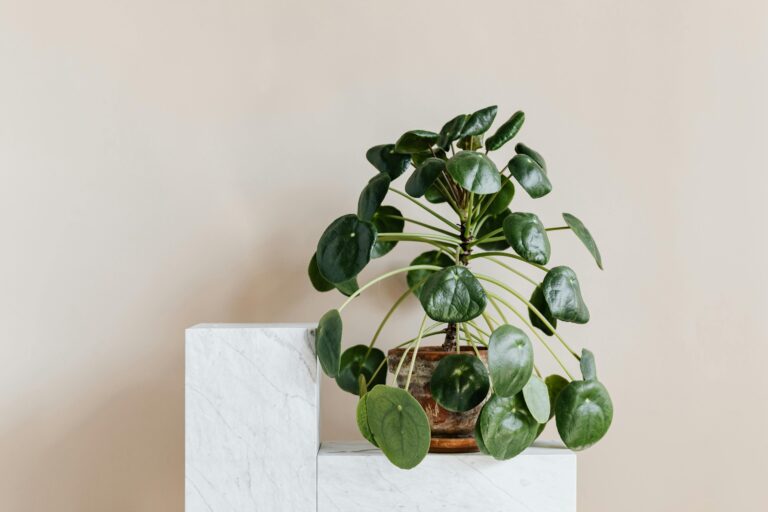
Only armed with this knowledge and a pair of sharp shears, you too can transform your sedum into a fortress against the onslaught of pests and diseases. Remember, each cut is a calculated decision in maintaining not just the beauty of your garden, but its robust health as well. So go ahead, give your sedum the trim it deserves and watch it return the favor with a flourish of vitality.
Different Pruning Approaches for Various Sedum Species
When it comes to the lush world of sedums, or stonecrops, a one-size-fits-all pruning strategy simply won’t do. These hardy succulents come in an array of shapes and sizes, each with its own unique set of shears—figuratively speaking, of course. Let’s dive into the meticulous craft of sedum pruning and explore how each snip and trim can lead to a healthier, more vibrant garden.
Creeping Sedum Groundcovers: The Gentle Trim
Imagine a lush carpet of green, decorated with star-like blooms, sprawling across your garden. This could be your reality with creeping sedum species such as Sedum reflexum or Sedum spurium. These groundcover succulents are low-maintenance charmers, but they do benefit from occasional light pruning. The goal here is to encourage denser growth and prevent them from getting leggy. In spring, armed with nothing more than your trusty garden scissors, give them a gentle haircut—just enough to shape them and encourage new growth. It’s like urging a shy person onto the dance floor; with a little encouragement, they’ll spread their leaves and shine!
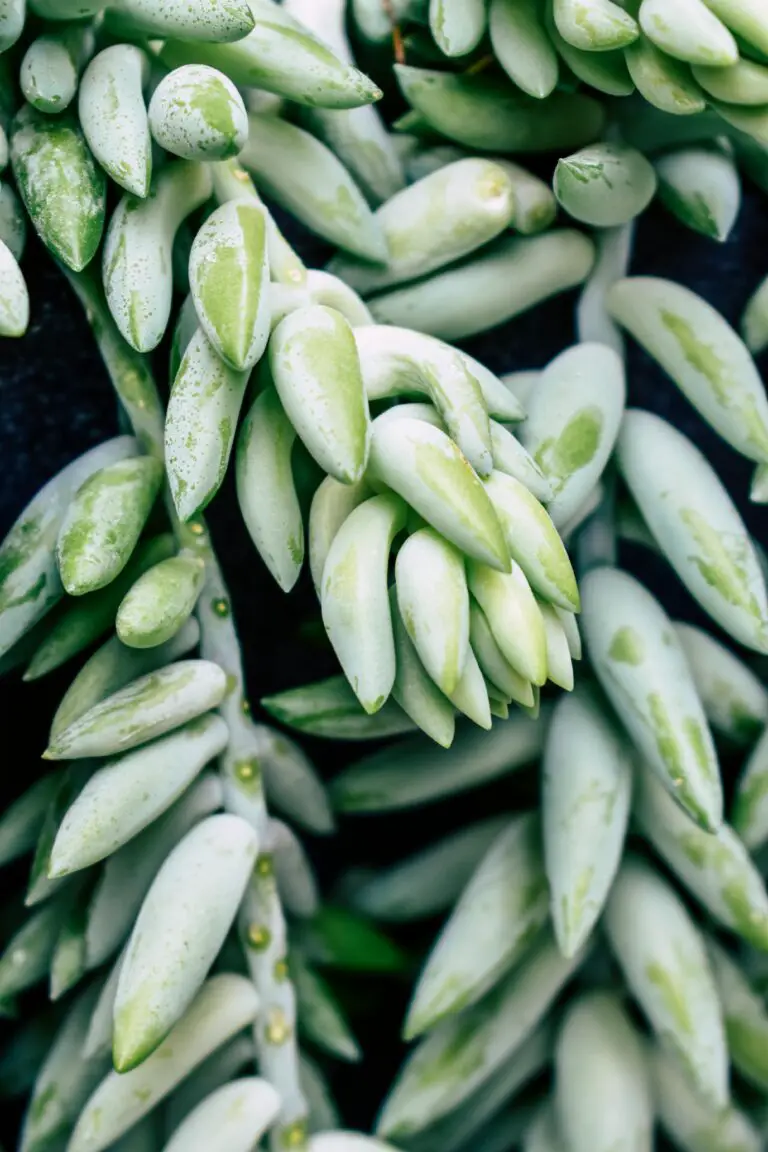
Tall, Upright Cultivars: Stand Tall and Proud
Now, let’s turn our attention to the statuesque beauties of the sedum family—the tall, upright cultivars like Sedum telephium or the famed ‘Autumn Joy.’ These sedums are the skyscrapers of succulents, reaching for the sky with their thick, fleshy stems and capping it off with a crown of colorful blooms. As winter bids adieu, it’s time to assess these tall friends. If you’ve let their seed heads fed the birds during the colder months, now’s the time to trim them back to a fresh bud to stimulate new growth. This isn’t merely a haircut; it’s a renaissance, signaling to the plant that it’s time to awaken and grow anew.
An Analytical Snip Here, A Strategic Cut There
Pruning sedum isn’t just about aesthetics; it’s a vital part of their health regimen. Just as we need our regular check-ups, sedums benefit from a scrutinizing gaze and the occasional snip. Whether you’re looking to propagate your sedums—turning one plant into many—or aiming to rejuvenate an overgrown clump, careful pruning can make a world of difference. Keep your cuts clean and your tools sterile, and you’ll be rewarded with sedums that are as robust as they are beautiful. Remember, it’s not just about making the cut—it’s about knowing where and when. The right pruning plan is like a strategic game; play it well, and your garden will prosper.
Frequently Asked Questions (FAQs)
Join us as we dive into the verdant world of sedum, those hardy, drought-tolerant succulents that grace our gardens with minimal fuss. There’s a persistent buzz among green thumbs and novice plant lovers alike regarding the proper care of sedum plants. Questions abound, and we’re here to sift through the soil of uncertainty and nurture your knowledge with a sprinkle of insight.
How Much Should I Cut Back My Sedum?
Imagine you’re giving your favorite succulent a seasonal haircut. You want to trim enough to encourage healthy growth without causing a bald situation. The same concept applies to sedums. As a general rule, cutting back by one-third in the early spring can prompt bushier growth, readying your sedum for a summer full of lush foliage and vibrant blooms. Remember, it’s about balance, not a shearing contest!
Can I Propagate Sedum from Cuttings?
Envision turning one treasured plant into a whole garden of gems. That’s the beauty of propagation! Sedums are as generous as an abundant harvest—just a few inches of stem, snipped at an angle, can lead to new life. Lay these cuttings on well-draining soil, give them the light they crave, and before long, you’ll witness a green renaissance. With sedums, sharing truly is caring.
Each snip, whether for trimming or propagation, is an ode to sustainability and self-sufficiency. From the humble urban balcony to the sprawling suburban backyard, sedums offer a lesson in resilience and adaptability that we can all appreciate. So, wield your garden shears with confidence and enjoy the ever-rewarding process of cultivating these remarkable succulents.
